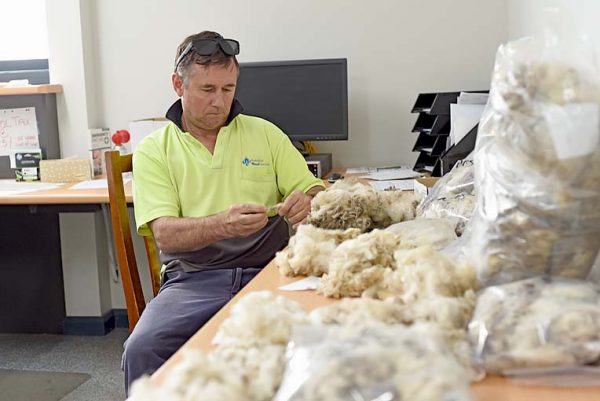

SOUTH Australia’s primary industry and agricultural sector hit record highs in 2018/19 and generated a revenue of more than $15b despite a challenging climate in much of the state.
That was the overall assessment of the Primary Industries and Regions South Australia scorecard, released yesterday, with the $15.2b revenue equating to a 2pc increase on the previous financial year.
The scorecard showed the revenue, sales and exports of the state’s key primary industry sectors, with significant growth in revenue in industries such as wool – 19pc, horticulture – 12pc and wine – 6pc.
Italo revealed wool production declined by 8pc to 54 million kilograms in 2018/19 due to destocking and lower wool yield per sheep due to drought, however production value of the sector reached $706m on the back of increased wool prices.
Australian Wool Network state manager Rod Miller said the drought, which impacted properties in the state’s north and other parts of the country, had little effect on Limestone Coast producers.
“The South East is really the powerhouse of the state’s wool industry, it produces around 30pc of the state’s wool,” he said.
“China also accounts for around 80pc of the industry’s exports and our South Australian wool types are actually well-suited to the Chinese market.
“We produce a more fine to medium wool type in South Australia and specifically in the South East with cross-bred varieties.
“That is actually more suited to the Chinese market as its a stronger wool.”
According to the scorecard, total wool exports increased by 19pc to $239m in 2018/19 driven by increase in both volume and price of wool exports.
The sector has recorded substantial growth when compared with 2014/15 and a robust upward trend in the past five years driven by improved prices.
With coronavirus effectively shutting down trade to China, Mr Miller said wool mills were at a standstill in the country, but the market had still held up well.
“There is normally about a one week break for Chinese New Year in wool anyway,” he said.
“The major wool processing region is only about 130km from Shanghai and quite a distance from Wuhan.
“Wool is still impacted by the outbreak, but we have not seen the issues other industries have at the moment.”
Although many parts of the state including Keilira, the Adelaide Hills and Kangaroo Island have been decimated by fire this summer, Mr Miller said the state’s wool industry was still in a positive place in 2020.
“There are many individual farmers that have lost almost all if not all of their stock,” he said.
“That obviously has a huge impact on them, but for the ones who still have stock on the ground, their wool has not actually been too badly impacted by the fires.
“We usually see cleaner wool in the South East and Kangaroo Island as opposed to the Mid North due to consistent rainfall.
“That 60ml or so of rain we got across those areas recently helped wash away a lot of the ash that came with the fires as well, so the wool quality has not suffered a lot.
“With the sheep that have seen burns to their wool, it is really on their belly fleece or their hocks, which is skirted anyway.”
Primary Industries and Regional Development Minister Tim Whetstone said the growth in value of farm product was a testament to the innovation and skills of the state’s farmers.
“Our primary industries and agribusiness sector is the biggest contributor to the state’s economy and the Marshall Liberal Government is committed to supporting continued growth in the sector,” he said.
“This is why our ‘Growth State’ initiative focuses on food, wine and agribusiness to grow Gross State Product by 3pc per year.
“Almost 116,000 jobs were supported by primary industries and processing – supporting growth in our regions.”







